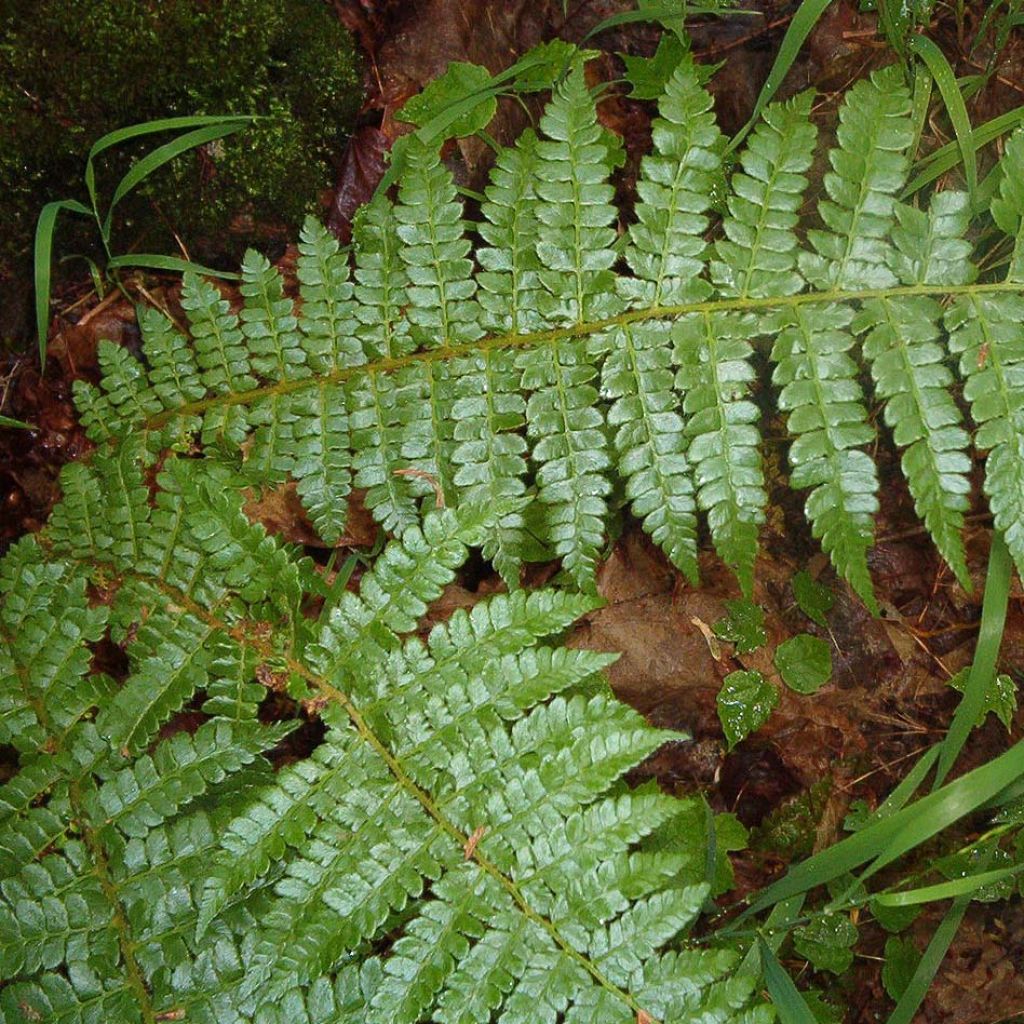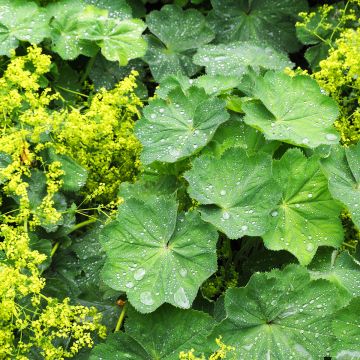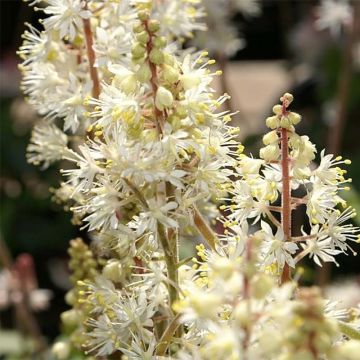

Polystichum braunii - Braun's Holly Fern


Polystichum braunii - Braun's Holly Fern
Polystichum braunii - Braun's Holly Fern
Polystichum braunii
Braun's Holly Fern, Braun's Shield Fern, Bear's Bed
This item cannot be shipped to the selected country
Delivery charge from €5.90
More information
Schedule delivery date,
and select date in basket
This plant carries a 12 months recovery warranty
More information
We guarantee the quality of our plants for a full growing cycle, and will replace at our expense any plant that fails to recover under normal climatic and planting conditions.
From €5.90 for pickup delivery and €6.90 for home delivery
Express home delivery from €8.90.
Does this plant fit my garden?
Set up your Plantfit profile →
Description
Polystichum braunii, also known as Braun's Holly Fern, is a mountain, hardy terrestrial fern. This species forms a generous cluster of thick, fluffy fronds, displaying a deep and glossy green colour that contrasts beautifully with scaly stems ranging from silver-gold to brown. Its wide-spreading habit and fronds emerging from a single point give it a lot of elegance. It is mostly deciduous but can be evergreen in mild climates. It thrives in deep, neutral, moist but well-drained soil, in partial shade or even full shade.
Polystichum braunii is a botanical species with a thick stump, native to Central Europe, mountains in Asia, and boreal America. It is a perennial plant of the Dryopteridaceae family, closely related to the male fern, which can be found in the wild in wooded areas and high-altitude ravines. Polystichum braunii forms a wide-spreading tuft with a languid habit, wider than tall, reaching a height of 40 to 80 cm (16 to 32 in). Its vegetation, which disappears in autumn, consists of fronds that all originate near the stump. They are villous to scaly, with a rachis that is also very scaly. The laminae are quite wide, oblong-lanceolate in shape, and divided into two rows of pinnules covered in bristles. They are narrow at the base and at their tips.
The polystichums make up a highly diverse and particularly decorative genus throughout the year for most species and varieties. Polystichum braunii is a very hardy species that adapts well to mountainous climates, as it appreciates humid atmospheres. In the undergrowth, it can be associated with simple plants such as butcher's broom, holly, mahonias, or cotoneasters. In a shaded border, it can be paired with hart's tongue ferns or a sturdy and undemanding conifer like Siberian carpet cypress. In a more refined flower bed, it can accompany fuchsias, large hostas (Hosta Empress Wu), and two-toned pineapple lilies. It also thrives near water, among candelabra primroses (Primula bulleyana) or Japanese primroses (Primula japonica).
Report an error about the product description
Polystichum braunii - Braun's Holly Fern in pictures


Foliage
Plant habit
Botanical data
Polystichum
braunii
Dryopteridaceae
Braun's Holly Fern, Braun's Shield Fern, Bear's Bed
North America
Other Polystichum
Planting and care
Polystichum braunii is grown in semi-shaded or shady conditions, in loamy to clayey, moist but not waterlogged soil that is close to neutral. It particularly appreciates a humid atmosphere and a fertile substrate, composed of humus, clay, and dead leaves. The old fronds of these deciduous ferns should eventually be cut back in early spring, flush with the stump, so that you can fully enjoy the extraordinary spectacle offered by the growth of new fronds each year.
Planting period
Intended location
Care
This item has not been reviewed yet - be the first to leave a review about it.
Shade-loving perennials
Haven't found what you were looking for?
Hardiness is the lowest winter temperature a plant can endure without suffering serious damage or even dying. However, hardiness is affected by location (a sheltered area, such as a patio), protection (winter cover) and soil type (hardiness is improved by well-drained soil).

Photo Sharing Terms & Conditions
In order to encourage gardeners to interact and share their experiences, Promesse de fleurs offers various media enabling content to be uploaded onto its Site - in particular via the ‘Photo sharing’ module.
The User agrees to refrain from:
- Posting any content that is illegal, prejudicial, insulting, racist, inciteful to hatred, revisionist, contrary to public decency, that infringes on privacy or on the privacy rights of third parties, in particular the publicity rights of persons and goods, intellectual property rights, or the right to privacy.
- Submitting content on behalf of a third party;
- Impersonate the identity of a third party and/or publish any personal information about a third party;
In general, the User undertakes to refrain from any unethical behaviour.
All Content (in particular text, comments, files, images, photos, videos, creative works, etc.), which may be subject to property or intellectual property rights, image or other private rights, shall remain the property of the User, subject to the limited rights granted by the terms of the licence granted by Promesse de fleurs as stated below. Users are at liberty to publish or not to publish such Content on the Site, notably via the ‘Photo Sharing’ facility, and accept that this Content shall be made public and freely accessible, notably on the Internet.
Users further acknowledge, undertake to have ,and guarantee that they hold all necessary rights and permissions to publish such material on the Site, in particular with regard to the legislation in force pertaining to any privacy, property, intellectual property, image, or contractual rights, or rights of any other nature. By publishing such Content on the Site, Users acknowledge accepting full liability as publishers of the Content within the meaning of the law, and grant Promesse de fleurs, free of charge, an inclusive, worldwide licence for the said Content for the entire duration of its publication, including all reproduction, representation, up/downloading, displaying, performing, transmission, and storage rights.
Users also grant permission for their name to be linked to the Content and accept that this link may not always be made available.
By engaging in posting material, Users consent to their Content becoming automatically accessible on the Internet, in particular on other sites and/or blogs and/or web pages of the Promesse de fleurs site, including in particular social pages and the Promesse de fleurs catalogue.
Users may secure the removal of entrusted content free of charge by issuing a simple request via our contact form.
The flowering period indicated on our website applies to countries and regions located in USDA zone 8 (France, the United Kingdom, Ireland, the Netherlands, etc.)
It will vary according to where you live:
- In zones 9 to 10 (Italy, Spain, Greece, etc.), flowering will occur about 2 to 4 weeks earlier.
- In zones 6 to 7 (Germany, Poland, Slovenia, and lower mountainous regions), flowering will be delayed by 2 to 3 weeks.
- In zone 5 (Central Europe, Scandinavia), blooming will be delayed by 3 to 5 weeks.
In temperate climates, pruning of spring-flowering shrubs (forsythia, spireas, etc.) should be done just after flowering.
Pruning of summer-flowering shrubs (Indian Lilac, Perovskia, etc.) can be done in winter or spring.
In cold regions as well as with frost-sensitive plants, avoid pruning too early when severe frosts may still occur.
The planting period indicated on our website applies to countries and regions located in USDA zone 8 (France, United Kingdom, Ireland, Netherlands).
It will vary according to where you live:
- In Mediterranean zones (Marseille, Madrid, Milan, etc.), autumn and winter are the best planting periods.
- In continental zones (Strasbourg, Munich, Vienna, etc.), delay planting by 2 to 3 weeks in spring and bring it forward by 2 to 4 weeks in autumn.
- In mountainous regions (the Alps, Pyrenees, Carpathians, etc.), it is best to plant in late spring (May-June) or late summer (August-September).
The harvesting period indicated on our website applies to countries and regions in USDA zone 8 (France, England, Ireland, the Netherlands).
In colder areas (Scandinavia, Poland, Austria...) fruit and vegetable harvests are likely to be delayed by 3-4 weeks.
In warmer areas (Italy, Spain, Greece, etc.), harvesting will probably take place earlier, depending on weather conditions.
The sowing periods indicated on our website apply to countries and regions within USDA Zone 8 (France, UK, Ireland, Netherlands).
In colder areas (Scandinavia, Poland, Austria...), delay any outdoor sowing by 3-4 weeks, or sow under glass.
In warmer climes (Italy, Spain, Greece, etc.), bring outdoor sowing forward by a few weeks.
























































